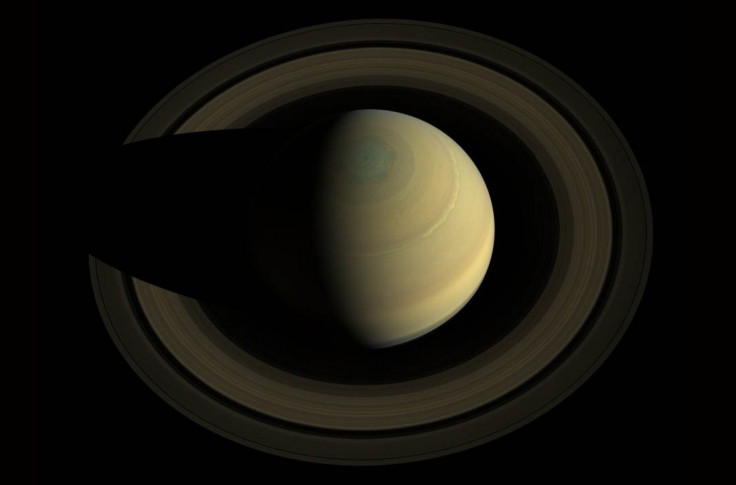A View ‘As Good As Gold’ From Above Saturn: Cassini Composes Portrait Of The Ringed Planet

NASA’s Cassini spacecraft made a loop high above Saturn to get a splendid view of the golden-hued planet and its rings, with the space agency touting the sight as “a view as good as gold.”
The new Saturn’s portrait, which was obtained by Cassini on Oct. 10, 2013, is said to be a natural-color view of the planet, which is created as human eyes would have seen it. The image also showed off the differently colored bands of weather at Saturn.
“A bright, wavy stream of clouds around 42 degrees north latitude appears to mark some of the turbulent aftermath of a giant storm that reached its violent peak in early 2011,” NASA said in a statement. “The mysterious six-sided weather pattern known as the hexagon is also visible around Saturn's north pole.”
According to scientists, when Cassini started exploring the Saturn in 2004, it was winter in the northern hemisphere of the planet, with the region sporting a bluish hue. The southern hemisphere of Saturn, where it was summer, was dominated by golden tones.
However, after the northern summer had begun, the colors also started to change in each hemisphere as well. While golden tones have started to dominate in the northern hemisphere and the bluish color in the north is now limited to a tighter circle around the north pole of the planet.
The rings shown in the image include Saturn's main rings. While the innermost D ring, as well as the C, B and A rings, are easily seen, the F ring is not readily visible without enhancing the contrast of the image. The rings also cast a shadow on Saturn at the limb of the planet in the lower right quadrant.
The Cassini is currently circling Saturn in “inclined orbits,” which allow the spacecraft to swing up over the planet’s north pole and below the south pole. A full Saturn year is equivalent to 30 Earth years, and Cassini has been able to observe nearly a third of a Saturn year until now.
“Cassini was tilted as much as 62 degrees from the plane of Saturn's equator in April of this year and will continue to work its way back down again till early 2015,” NASA said. “Much of Cassini's tour has involved orbits around the equatorial plane, where most of Saturn's rings and moons are located.”
Cassini also recently took images of the liquid methane and ethane seas and lakes near the north pole of Saturn's moon, Titan, offering new clues about how the lakes might have formed.
© Copyright IBTimes 2024. All rights reserved.






















